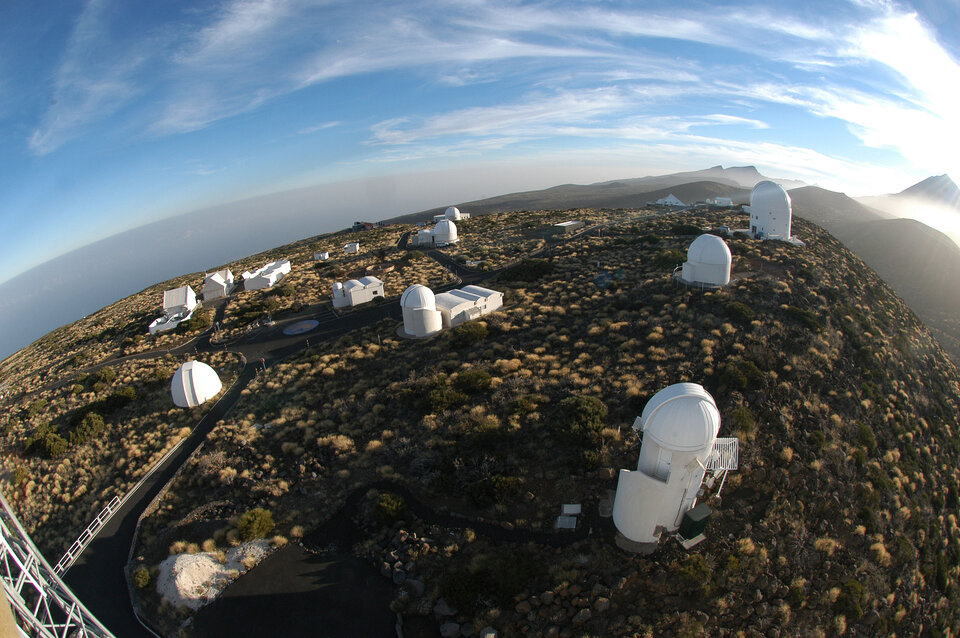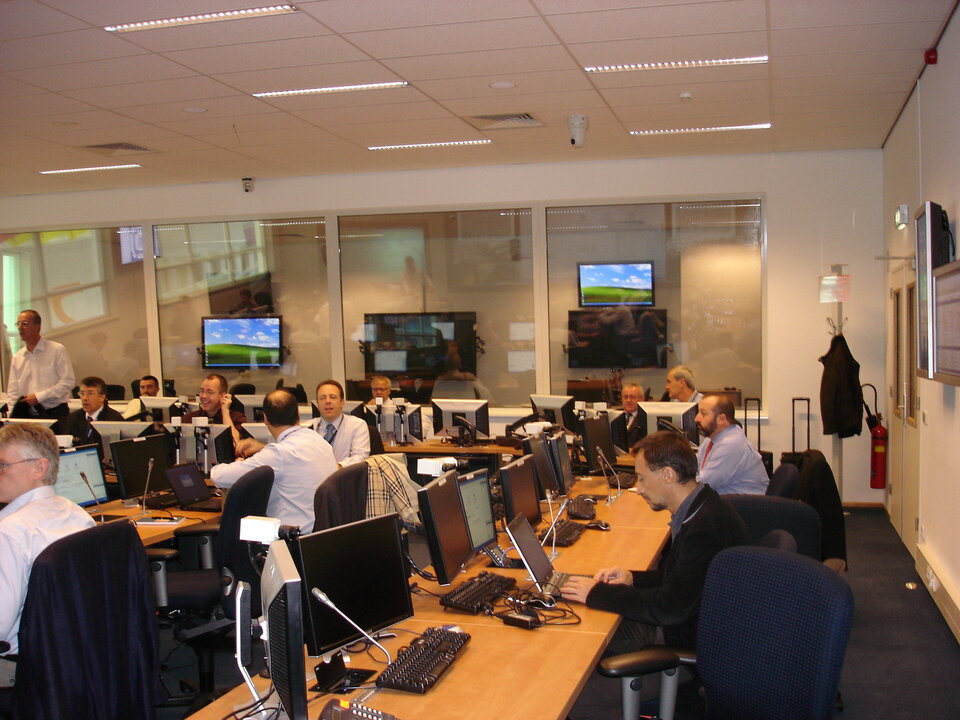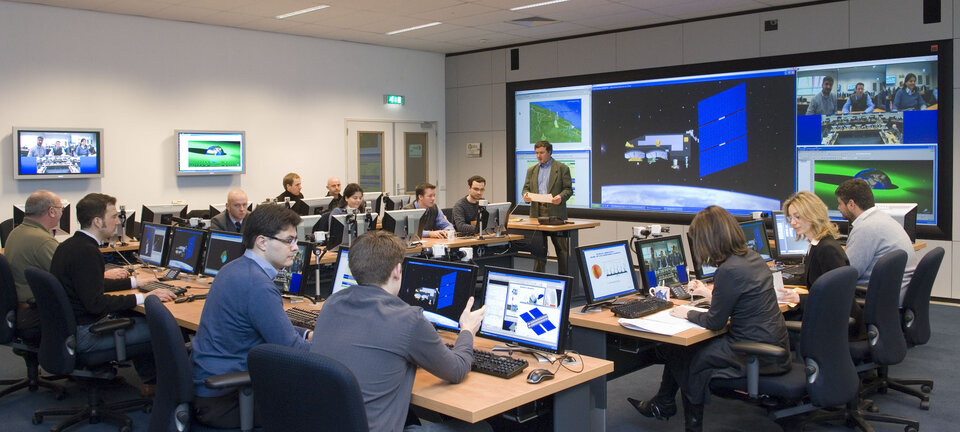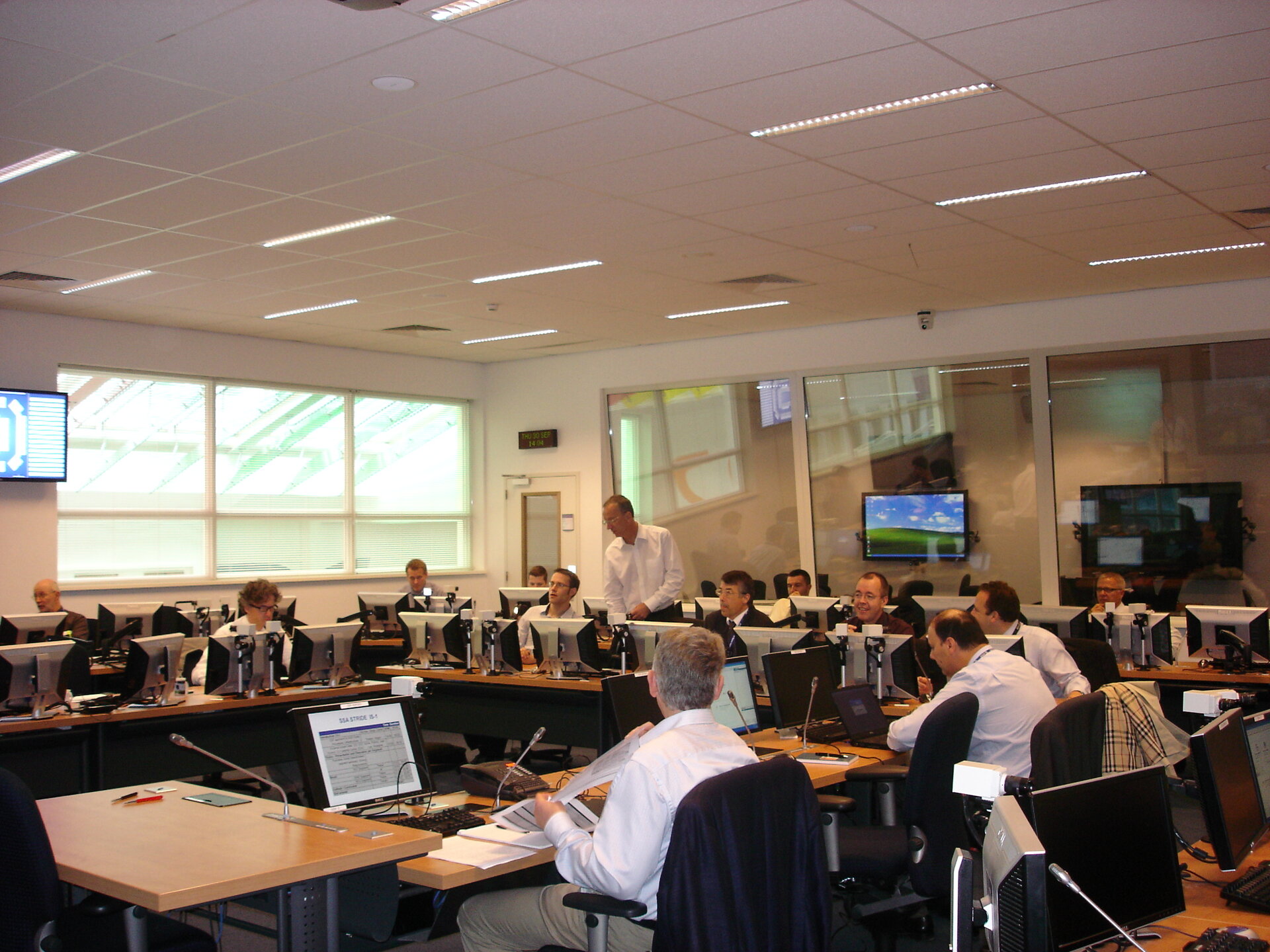High-tech design for ESA's space hazards awareness system
ESA’s state-of-the-art Concurrent Design Facility is usually employed for sophisticated space missions. But it is now working on a largely ground-based project: designing the Agency’s Space Situational Awareness infrastructure, which will allow Europe to track potential hazards in space.
ESA and industry cooperating for SSA
ESA's Space Situational Awareness (SSA) system, will enable Europe to predict, detect and assess the risk to life, property and in particular space assets due to natural or man-made space hazards.
These are hazards generated by re-entries, orbital explosions, release events, orbital collisions, potential impacts of Near-Earth Objects, and the effects of space weather on space and ground infrastructure.

A contract was recently awarded to Thales Alenia Space (France) supported by Spanish, French, German and Belgian companies.
The results of this SSA engineering design work will be used to define the top-level SSA architecture taking into account European assets and the interactions between them. When complete, the SSA infrastructure will function as a tightly integrated 'System of Systems'.
Systems of Systems are characterised by the independence of their elements, their evolutionary nature, emergent behaviours, and a geographic extent that limits the interaction of their elements to information exchange. A System of Systems is a service- and end-user-oriented architecture, especially conceived for security systems.

Designing such a complex setup is a new and cost-effective application for ESA's advanced Concurrent Design Facility (CDF), usually used for designing and modelling sophisticated satellite designs.
Using the CDF ESA can support this industry activity by providing a collaborative environment, allowing ESA to follow the progress of the work performed closely. The results are gathered and analysed on a regular basis.
ESA internal architecture activity in the CDF will provide industry with feedback. This approach contributes to a common understanding, strategy and overall planning on both sides from the very beginning, preparing the parties for an effective and streamlined final review.

"Using the CDF to design the overall Space Situational Awareness infrastructure is an innovative way to design this System of Systems," said Serge Moulin, engineer responsible for SSA infrastructure design.
"We can change one element - perhaps something related to space weather - and see right away how this would affect the other systems - like the debris object tracking system. Without the CDF, this would be difficult, if not impossible."
Concurrent design techniques cut time and costs

The CDF is located at ESA's ESTEC technical centre in the Netherlands and is equipped with a network of computers, multimedia devices and software tools that allow a team of experts from different engineering disciplines to work in close coordination.
Traditionally, engineers faced with the task of designing a new, complex system or structure - a car, an aircraft or a satellite - work sequentially, one step at a time, passing the design from engineer to engineer. This is inefficient and consumes time and resources.
For more than a decade, many of ESA's sophisticated spacecraft have been designed with the help of the CDF, making use of very advanced iterative techniques - hence its title 'concurrent'.
Concurrent engineering puts all related engineers, with all their brain power and required tools together with the final user representative - or customer - in the same location at the same time. This allows for iterative design at a fast pace, with customer and designers agreeing requirements and taking decisions in real time to ensure the best design for the right cost and an acceptable risk.
This process has been developed and honed so it is now common to produce a costed, risk assessed conceptual space mission design complete with various options and including scheduling, testing and operations in a matter of weeks.

"Designing a complex System of Systems takes place on a higher level and higher complexity than conventional space mission designs and therefore it requires different disciplines, experts, tools, models and study planning," said Torsten Bieler, CDF lead engineer working for SSA.
"All this needs to be taken into account when applying the concurrent approach to a System of Systems architecture like SSA."
Bieler emphasised that the CDF makes excellent use of the collective engineering knowledge at ESA, adding: "Experience has taught us that using the CDF at the conceptual stage of a design enables ESA to make better decisions, provides industry with a consolidated set of requirements together with some preliminary design and associated critical issues and drivers.
"This represents a better starting point for the industrial work allowing them to start and proceed quicker. Ultimately this leads to an optimised SSA providing better value for taxpayers’ money".





